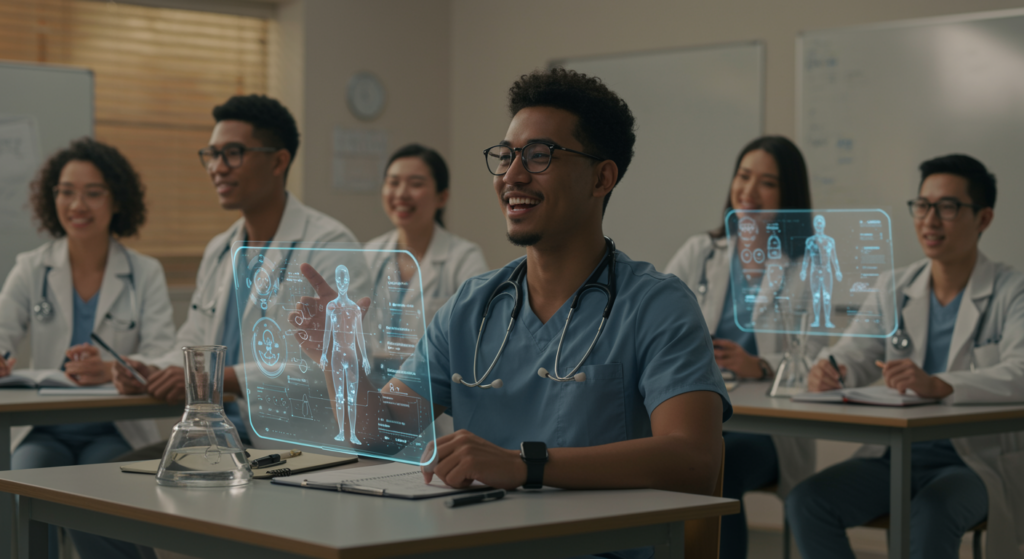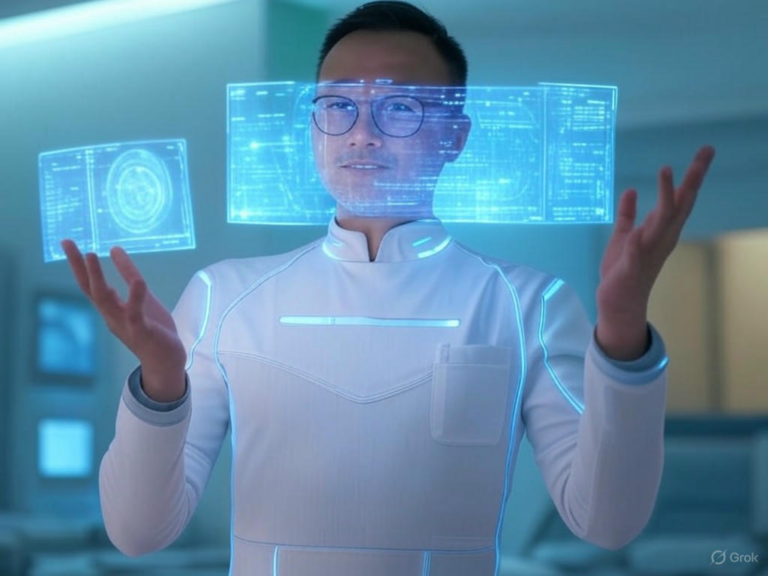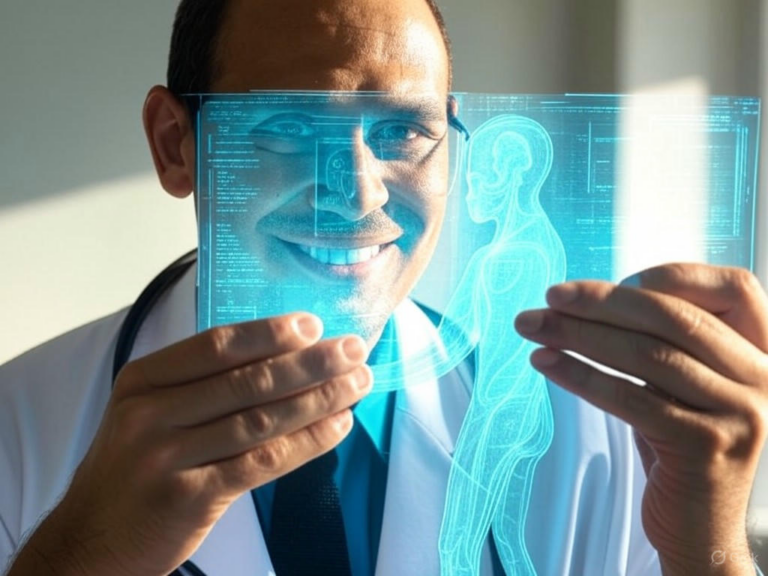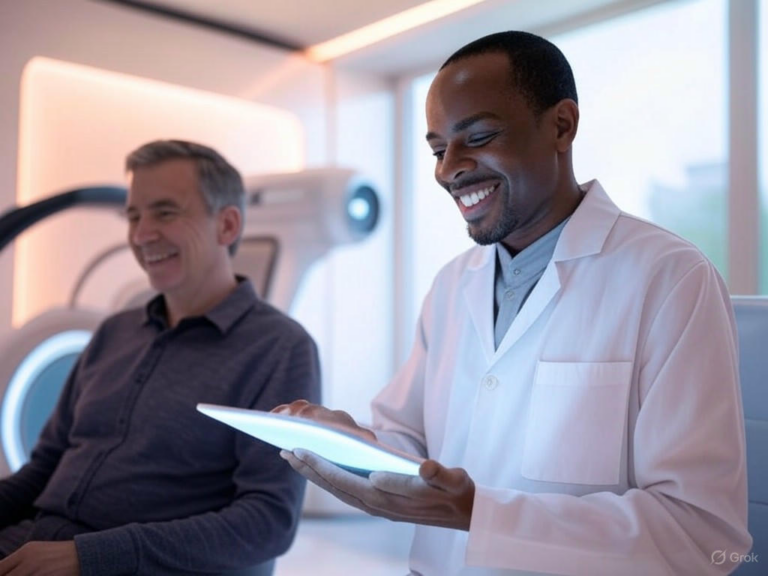
AI Transforming Medical Education Approaches
AI in Medical Education: The Revolution Transforming Future Doctors’ Learning
AI in medical education is reshaping how medical students absorb knowledge, much like the internet did in the 1990s. This shift, described by Harvard’s Bernard Chang as a rare “once every few decades” change, is turning traditional methods upside down. Imagine students accessing customized lessons that adapt in real time—it’s not science fiction anymore.
Far from just a tech add-on, AI in medical education builds adaptable physicians for tomorrow’s healthcare. Schools nationwide are blending these tools into their programs, ensuring rigorous training while boosting efficiency through personalized paths and advanced simulations.
The Catalytic Effect of ChatGPT on AI in Medical Education
ChatGPT’s 2022 launch shook up AI in medical education, showing it could pass key exams like the U.S. Medical Licensing Exam. By 2023, advanced versions were outperforming students and doctors in clinical reasoning tests. Have you ever thought about how a chatbot could challenge human expertise?
This has educators rethinking core curricula, as Dr. Chang notes: generative AI is becoming indispensable. In AI in medical education, it’s not about replacing teachers but enhancing how students build skills for real-world challenges.
Five Innovative Ways AI in Medical Education Is Being Implemented
How AI in Medical Education Creates Adaptive Learning Materials
One exciting area of AI in medical education involves crafting personalized study materials. For instance, schools in Ohio use AI to generate targeted questions, helping students spot and fix knowledge gaps quickly. This means learning paths that evolve based on your progress, making study sessions more effective than ever.
These systems analyze performance data for instant feedback, adjusting difficulty to match each student’s level. It’s a game-changer for anyone overwhelmed by uniform curriculums—think of it as a personal tutor that never sleeps.
AI Simulations: Preparing Students Through Virtual Encounters
AI in medical education shines in simulating patient interactions, with programs in Texas and Minnesota offering virtual clinical visits. Students practice diagnosing and communicating in safe, realistic scenarios, gaining confidence without real-world risks. What if you could rehearse a tough consultation before facing it?
These simulations respond dynamically, providing feedback that mimics actual patient outcomes. They bridge the gap between theory and practice, a vital step in AI in medical education for building hands-on skills.
Enhancing Assessments with Tools from AI in Medical Education
AI is making evaluations fairer and faster, as seen in Florida where tools assist with residency applications. By reducing bias, these systems deliver precise, tailored feedback to students. Ever wondered how technology could make grading less subjective?
Tools like Optical Mark Recognition automate scoring, freeing up educators for what they do best: teaching. In the context of AI in medical education, this efficiency helps everyone focus on growth rather than paperwork.
Revolutionizing Diagnostic Training in AI in Medical Education
Fields like radiology benefit hugely from AI in medical education through tools that enhance pattern recognition. For example, content-based image retrieval systems let students compare images instantly, sharpening their diagnostic eye. This is especially useful in pathology, where AI analyzes cellular images for faster learning.
Machine learning also aids in identifying infections, offering technicians practical training that feels like real work. By integrating these, AI in medical education is equipping students to handle complex diagnostics with greater accuracy.
Curriculum Development: The AI in Medical Education Edge
AI streamlines curriculum design by scanning vast content for improvements, spotting gaps or redundancies. This data-driven method even measures student satisfaction, ensuring programs evolve based on real feedback. If you’re an educator, imagine having AI highlight what’s working and what’s not.
Schools can refine courses continuously, moving beyond outdated reviews. In AI in medical education, this approach fosters programs that truly prepare doctors for modern healthcare demands.
Preparing for an AI-Integrated Future in Medical Education
As AI in medical education advances, students must learn skills that complement technology, like critical thinking and ethics. AAMC’s Dr. Alison Whelan warns that we’re only starting to see these changes, emphasizing careful implementation. How will tomorrow’s doctors collaborate with AI in daily practice?
Current training shifts from rote memorization to real-world adaptability, teaching students to recognize AI’s limits and biases. This holistic preparation ensures graduates thrive in an AI-enhanced healthcare system.
The Long-Term Vision of AI in Medical Education
Looking ahead, AI in medical education could lead to flexible, competency-based programs unbound by rigid timelines. As AMA’s Dr. Marc Triola suggests, it might shorten or extend training based on individual readiness. Picture a world where education paces itself to your mastery, not a calendar.
In a decade, incoming students will have grown up with AI, transforming how we teach from the ground up. This evolution promises more efficient pathways, making AI in medical education a cornerstone of medical advancement.
Balancing Ethics in AI in Medical Education
With great potential comes responsibility, and AI in medical education is no exception. The AAMC’s principles guide ethical use, focusing on issues like bias and privacy. Schools are testing AI through pilot programs to ensure it enhances learning without harm.
This cautious approach keeps the human element at the forefront. For instance, while AI handles data analysis, educators oversee its application to maintain trust and quality in medical training.
AI’s Reach Beyond the Classroom in Medical Education
AI in medical education extends to how knowledge is shared, easing the search for resources with personalized recommendations. Platforms with simulations provide practical experience and immediate insights, reducing student stress. What tips could you share about using AI for your own learning?
Educators gain from AI’s help in crafting strategies, turning it into a partner for decision-making. Together, this collaboration boosts outcomes, making AI in medical education a tool for lifelong skill-building.
Conclusion: Embracing a New Era
AI in medical education is driving a transformation akin to the internet’s impact, from tailored learning to innovative assessments. As schools adapt, they’re molding physicians who are skilled, ethical, and ready for tech-driven healthcare. Here’s a quick tip: start exploring AI tools in your studies to stay ahead—apps like those from the AAMC can be a great beginning.
What’s your take on how AI will shape medical careers? Share your experiences in the comments, or check out our related posts on emerging technologies in healthcare. Let’s keep the conversation going.
References
1. Chang, Bernard. “How Generative AI is Transforming Medical Education.” Harvard Medical School Magazine. Link
2. “Artificial Intelligence in Medical Education.” PMC. Link
3. “AI in Medical Education: 5 Ways Schools Are Employing New Tools.” AAMC. Link
4. “Artificial Intelligence in Medical Education: Transforming Learning and Practice.” Cureus. Link
5. “AI and Medical Education.” PMC. Link
6. “Principles for the Responsible Use of Artificial Intelligence in Medical Education.” AAMC. Link
7. Blog Template Resource. Junia AI. Link (for general inspiration)
8. “ChatGPT and Medical Education.” American Medical Association. Link
AI in medical education, generative AI, medical curriculum, ChatGPT in medicine, medical student training, AI simulation, personalized learning, AI tools in healthcare education, future of medical training, ethical AI in medicine







